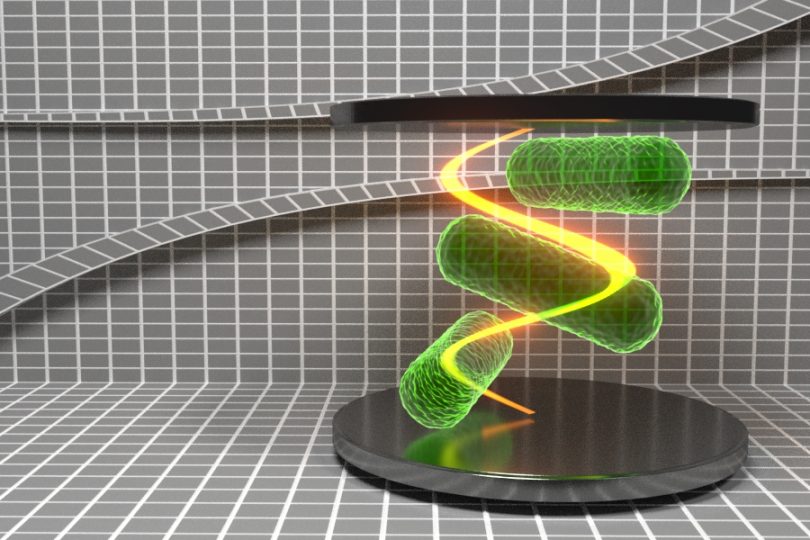
This week the journal Small published a paper entitled Biophotonics: A Nanophotonic Structure Containing Living Photosynthetic Bacteria.
It’s the culmination of work by myself, Robert Taylor, Jason Smith, David Coles and a host of others as part of the Oxford Martin Programme on bio-inspired quantum technologies.
As is the case with all good ideas, the conversation about this experiment started in a pub (The Royal Oak in Oxford, since you’ve asked). Dave Coles (the first author of the paper and the person who did the experiment) and I were sitting in the pub one Friday evening in 2015. Dave was telling me about his experiments on light harvesting antennae of green Sulphur bacteria. These large organelles, called chlorosomes are responsible for capturing light for photosynthesis (it’s how plants convert Sun’s light into energy) in green Sulphur bacteria which can live deep in the Black Sea, about 100m below the sea surface, where they get a few hundred photons per second on average. To put that into perspective, it would take them almost half a quadrillion years (about 30 thousand times the age of the universe) to gather the equivalent energy contained in a Mars bar (so they had better be good at catching photons!).
Dave had already showed in one of his previous experiments that he can get light strongly entangled with the chlorosomes on their own. Entanglement is a quantum phenomenon that Einstein called “spooky action at a distance”, where quantum objects (like photons and molecules) become so correlated and intertwined that we cannot tell the difference between them.
This experiment made a splash and was published in Nature Communications as Strong coupling between the chlorosome of photosynthetic bacteria and a confined optical cavity mode.
Its “claim to fame” was that it showed that big biological systems (like chlorosomes) can be in a genuine quantum mechanical state together with light.
Now, that evening in the Royal Oak I thought that Dave could do even better. Why not take a living bacterium and try to entangle it with light? Each green bacterium contains about 250 chlorosomes. So if each chlorosome can be in an entangled state, can we therefore get a living system to be in a genuine quantum state with light while it is still alive?
This seemed like a trailer of a science fiction movie! Can something be fully quantum and alive at the same time? One of the founders of quantum physics, Niels Bohr, thought not. But Dave and I kept discussing crazier and crazier ideas and at each point Dave would say “yes, I think I can do that”. It was thrilling. Needless to say, the pub was closing at the critical junction of our discussion, so we had to improvise. We got some beer and wine from a local off- license and went to my house.
We stayed up till 4am. I must admit I don’t remember much of the discussion (read: at some point I become tired and emotional) but I felt it was great. The next day I was flying to in Singapore, but Dave had actually gone to the lab to do the preliminary experiments. And they worked! He sent me an email with images showing that living bacteria could be entangled with light. I was very excited (I remember I could not sleep that night in Singapore and I don’t think it was the jetlag). Dave wrote up a paper based on the results and it is now a cover story in the journal Small.
But here is the really crazy stuff. Could Dave’s experiment be used to create the same bacteria in a state that has them dead and alive at the same time? Schrödinger presented his “dead and alive cat” experiment to try to illustrate how paradoxical quantum physics really was. However, maybe Schrödinger hit the nail on its head. Far from being paradoxical, perhaps it is really possible for living systems to be dead and alive?
I’ll leave you with this electrifying thought. But on a personal note, the experiment also illustrates the collaborative aspect of science, involving as it does a number of my colleagues both from Sheffield (where Dave now works), Oxford (Professor Robert Taylor and Professor Jason Smith, who are also at Oxford Martin School) and Harvard. And this is clearly something that contributes to a uniquely human and enjoyable aspect of doing physics.
This opinion piece reflects the views of the author, and does not necessarily reflect the position of the Oxford Martin School or the University of Oxford. Any errors or omissions are those of the author.